Places that hold memories of the past lose some of their emotional sting over time and free us to fill in the spaces with our imagines of how things were.
On a visit to the Hanover Museum in Lucea, Jamaica, I saw for the first time the inside of a colonial jail and I could almost feel the pain that stained the walls.
The Hanover Museum Jamaica is located in what was formerly the Hanover Workhouse, a two-story structure that was built of cut stone, about 12″ thick, that was transported from England as ship’s ballast. It is uncertain when this workhouse was built but there are references to it at the time of the Hanover Conspiracy, an attempted slave uprising in 1776.
The Hanover Workhouse consisted of four rooms, a jailor’s house and, on an upper level, two “apartments” for debtors. It served as a place of incarceration for male and female slaves who were held there for a variety of offences. (According to one of the storyboards, one woman said she was there for having too many children — eight.) Some were also sent to the workhouse to be ‘broken in’ upon arrival in Jamaica.

The tour begins in the main area that is said to have held up to 50 people. Off this area is a cell with a concrete bed that runs the length of the room, almost filling it. About 3 feet off the floor, the bed had a pillow — of concrete — and reportedly slept up to 15 prisoners. Seeing this bed, my mind drifted to the words from Bob Marley. “Cold ground was my bed last night, and rock was my pillow too” from Talking Blues.
Next to the sleeping area, are two smaller cells where prisoners were sent for solitary confinement. There were no beds here and I wondered if they were kept shackled in collars or other contraptions.
There’s another large room but it’s unclear what that was used for. Only the cut stone outer walls of the upper floor remain.
The Hanover Workhouse, as the name suggests, was not a place of relaxation. Prisoners were fed minimal rations and they had to work – breaking stones, clearing brush and fixing roads – and they were chained together to get it done.
There were other methods of punishment: prisoners were put in collars or on a treadmill, a brutal mechanism that resembled a waterwheel above with a horizontal bar which they had to hold, their feet just touching the wheel. They had to keep pedaling the wheel in order to avoid serious injury or a whipping from the overseer who stood nearby.
A Disturbing Artifact
One disturbing artifact that is on view is a metal cage, called a gibbet, in which a prisoner was enclosed from head to toe. I felt a chill down my back as the guide explained that after being secured in the gibbet, it would be hung outside until the slave died.
In 17th century England, judges could impose a sentence of gibbeting for those found guilty of capital crimes like murder, pirating, etc. Thomas Thistlewood, a British plantation overseer, recorded in his journal that gibbeting was used in Westmoreland during the 1760 Tacky rebellion.
The Yorubas, Indentured in Jamaica
In a smaller exhibition room, are artifacts from Yoruba-Anago indentured labourers who, following emancipation in 1838, came to Jamaica from West Africa to work on contract on the plantations. Many were not allowed to return home and settled in the parishes of Hanover and the neighboring parish of Westmoreland, where they became known as Nagos and Etu or Ettu. Some of their language and customs, including that of the wake or “Dead Yard,” are still practiced by their descendants.
At the Dead Yard, traditional dances are performed to console the bereaved. The best dancers are rewarded for their performance with a small cloth (shawl), in what is called a “Shawling.” When my mom died suddenly several years ago, singers and dancers from the community came and performed a gerreh, as it is called in Westmoreland. I participated in the dance and can state without question that it really lift the intense grief I felt.
At the museum, you can see the dance and “Shawling” on video along with interviews of Etu people speaking the language of their ancestors. Some of the words and intonation sound similar to those in our local dialect.
A small store at the museum sells books and other publications, monkey jars (clay jars that were used to store and keep water cool), small replicas of coal pots, kitchen bitches (an old can with a handle soldered on, the kitchen bitch was filled with kerosene oil and had a cloth wick but no shade. It was used mainly in the kitchen, hence the name.), etc.
The Hanover Museum Jamaica backs onto the scenic Lucea harbor. As I stood looking at the calming blue waters, I wondered how many of my ancestors were tempted to swim away from their harsh imprisonment.
The Hanover Museum is part of the Institute of Jamaica, an organization that promotes the “encouragement of literature, science and art in Jamaica.” It was opened originally in 1990 after several years as a jail and the headquarters for the Lucea police force. Following refurbishing, it was reopened in 2011.
Getting There:
The Hanover Museum Jamaica is located on Watson Taylor Drive behind the Lucea Roman Catholic Church.
Open Mondays to Thursdays from 8:30 – 5:00 pm, 8:30 – 4:00 p.m. on Fridays.
Fee: J$400 (local rate)/$US5 person
876-956-2584

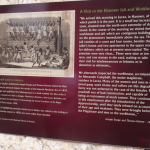
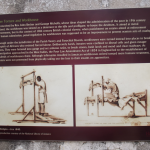
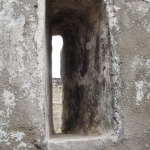
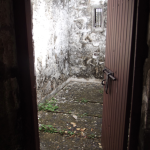
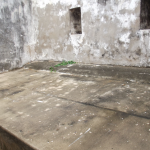
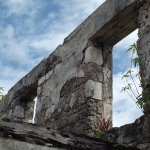

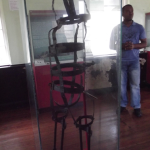
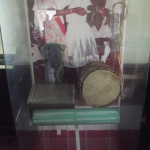
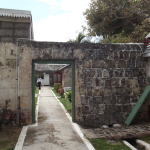
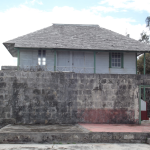
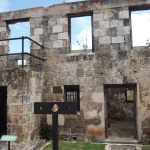
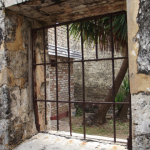
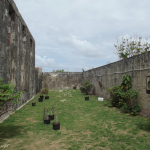
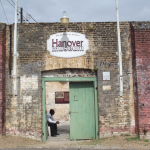

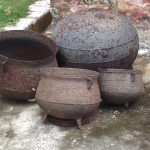









Gosh, that metal cage sent shivers down my spine too! I went to the old jailhouse for a tour when I visited Charleston, SC, and have to say…prisoners today have it much better than they did in the olden days!
So true, Jess. Prisoners today have it relatively easy.
I’m not opposed to rough conditions for prisoners, but this seems really harsh for people who shouldn’t have been incarcerated in the first place. Especially that metal cage. Things like that should be reserved for the very worst offenders, like serial killers or boys who try and ask my daughters out.
It was heartbreaking reading this and I’m sure your experience seeing it in person magnified the atrocities the prisoners suffered. I can’t believe that woman was jailed for having too many children. This had to be humanity at one of its low points. It makes our prisons nowadays look like resorts compared to this and the people in it now have committed far worse crimes. Thanks for this eye-opening and interesting post, Marcia!
I can never understand how one human being can be so brutal to another. I also can’t get over the types of torture people dream up and marvel at what a sick world we sometimes live in as God knows how much torture continues to this day. A very moving account of a place that I can well understand would be very difficult to visit. If only we humans were smart enough not to repeat history.
The steel cage makes me shudder and the concrete bed makes me appreciative of all that we have in our lives. Very well captured, the essence of the post has been depicted.
Have a lovely day Marcia 🙂
You gave us a comprehensive report on a fascinating subject…. TY for your insights. 🙂
Eliz
Thanks, Elizabeth. It sure is fascinating.
Thanks, Arti. Both definitely fall under cruel and inhumane. I agree: we are very lucky these are in the past.
Thanks, Leigh. Well said. You’d think we’d evolve and stop doing some of the things we continue to do but we never seem to learn.
You’re welcome, Mary. It was difficult to visit and took several weeks to write about in hopefully, a balanced way.
It was definitely humanity at its worst though now I’ve heard of other situations that were so depraved, it’s difficult to believe people could have stooped that low. Thank goodness we’re living in this century!
Hahahaha, that’s funny, Steve. But I understand how dads are with the boys who try and ask their daughters out.
Thing is, if they had metal cages for serial killers you’d have some organization complaining that they were too barbaric, which they were.
The metal cage was awful. The prisoners must have suffered a lot in there.
The cage sends shivers down my spine . Being hung till death was beyond being inhumane. The concrete bed too explains how difficult conditions of prisoners would have been . The essence of the share has been put forth really well.
I can’t even imagine what it must have been like to be put in one of them. Yes, Sarah, they are awful.
Hi Marciam,
Mental cage is awful, such a treatment to humans, never thought!!! A note of thanks to you, for exploring such museums, and spreading word about them. The pictures are indeed a hurtful sight.
Museums and historical places always intrigue me; thanks for the trip to this great museum.
You’re welcome, Fatima!
Thanks for your comment.
You’re so right, Aayna. I do like visiting museums even when it’s hard on the emotions.
Thanks, Purnima. The cage and the bed really put into perspective what prisons were. Definitely not a place for rehabilitation.
We have a place like that – Port Arthur in Tasmania http://www.portarthur.org.au/. I’ve been there once and won’t go back. I could feel the spirits there, too many tortured souls.
Do you think some of your ancestors were in that place?
You know, that’s a good question, Narelle. I hadn’t thought of that but it’s quite possible. We have relatives there and the neighboring parish is where my maternal grandparents are from so it’s definitely possible.
Port Arthur does sound like the ghosts of tortured souls would still be hanging around there, just like at the Hanover Museum.